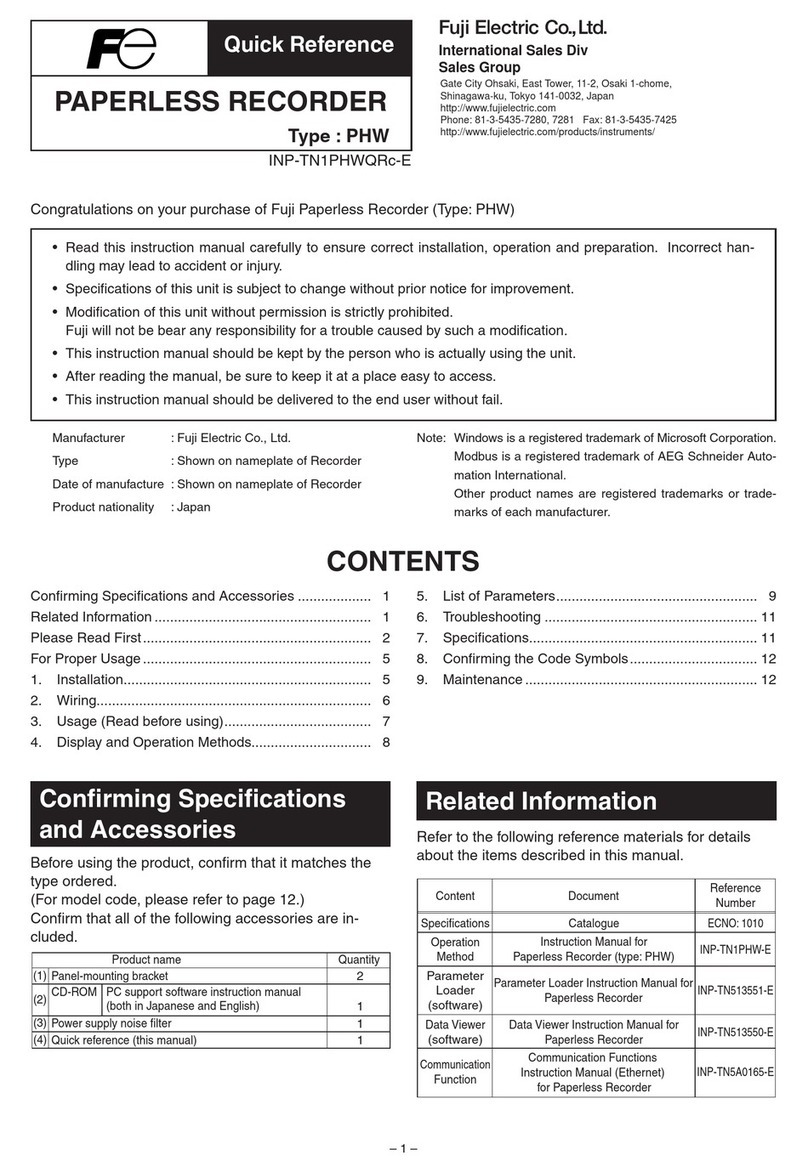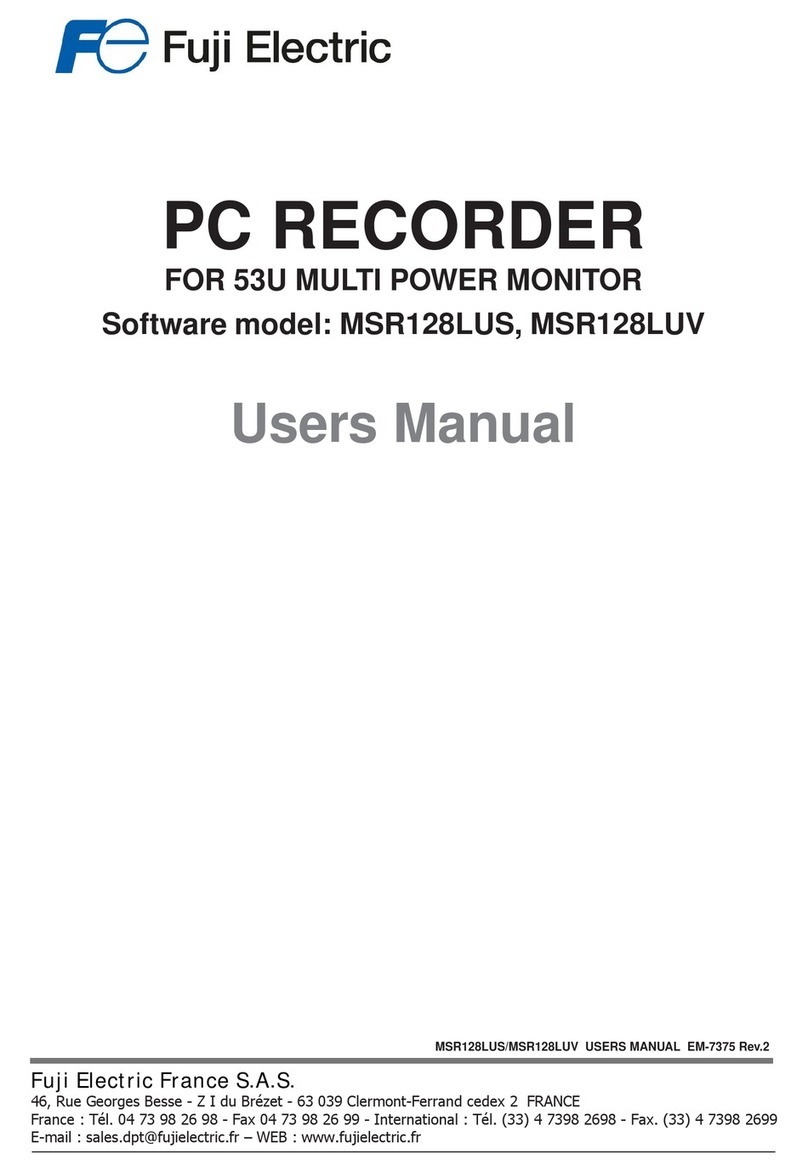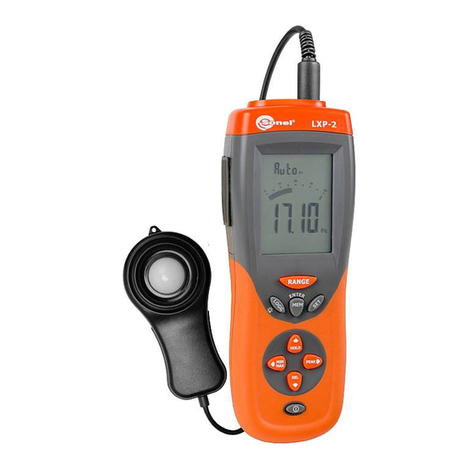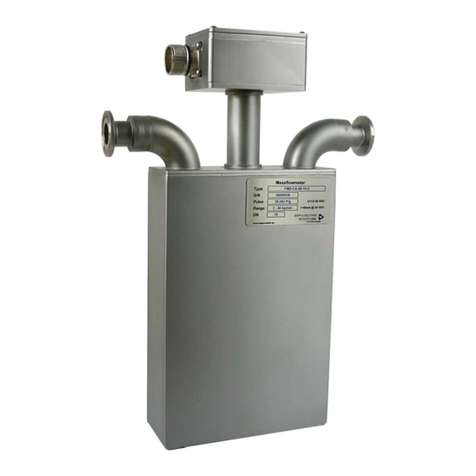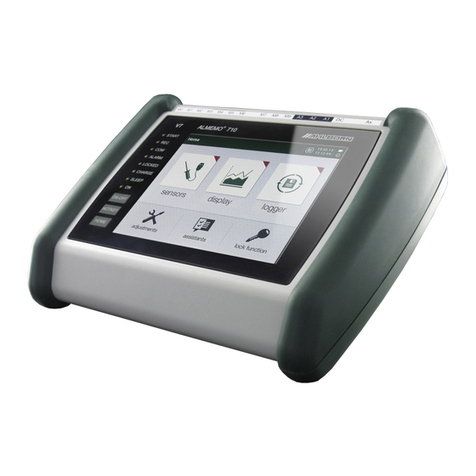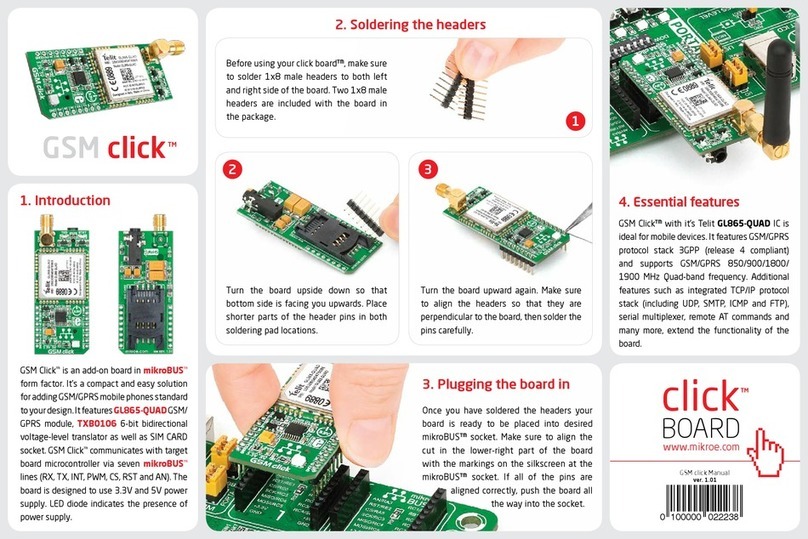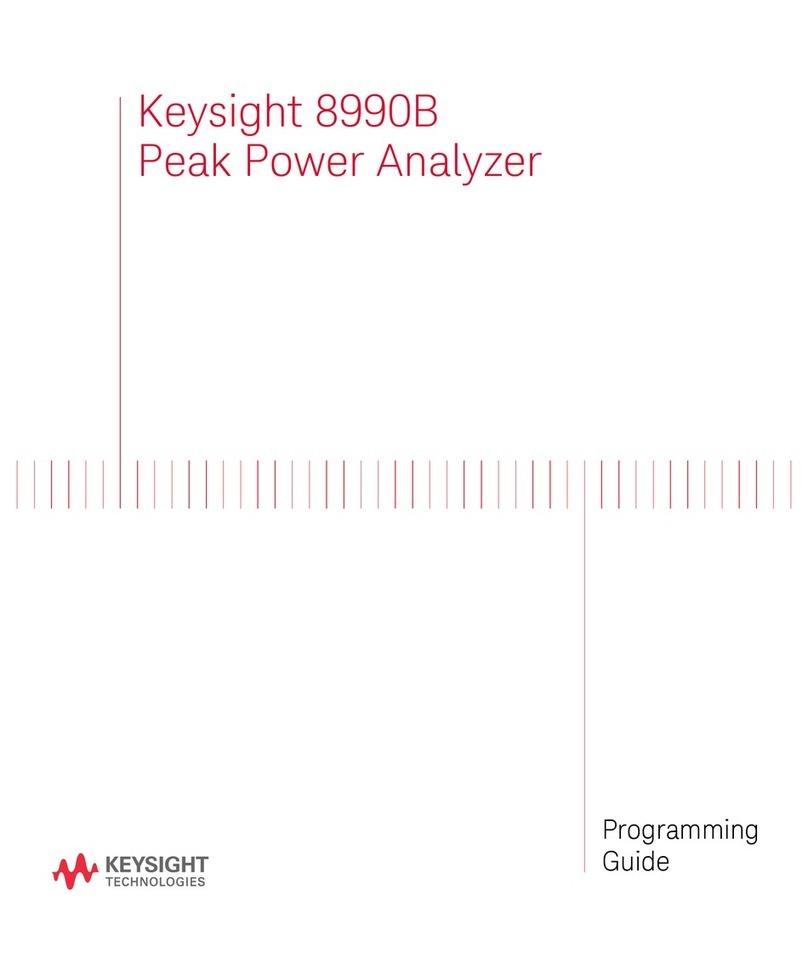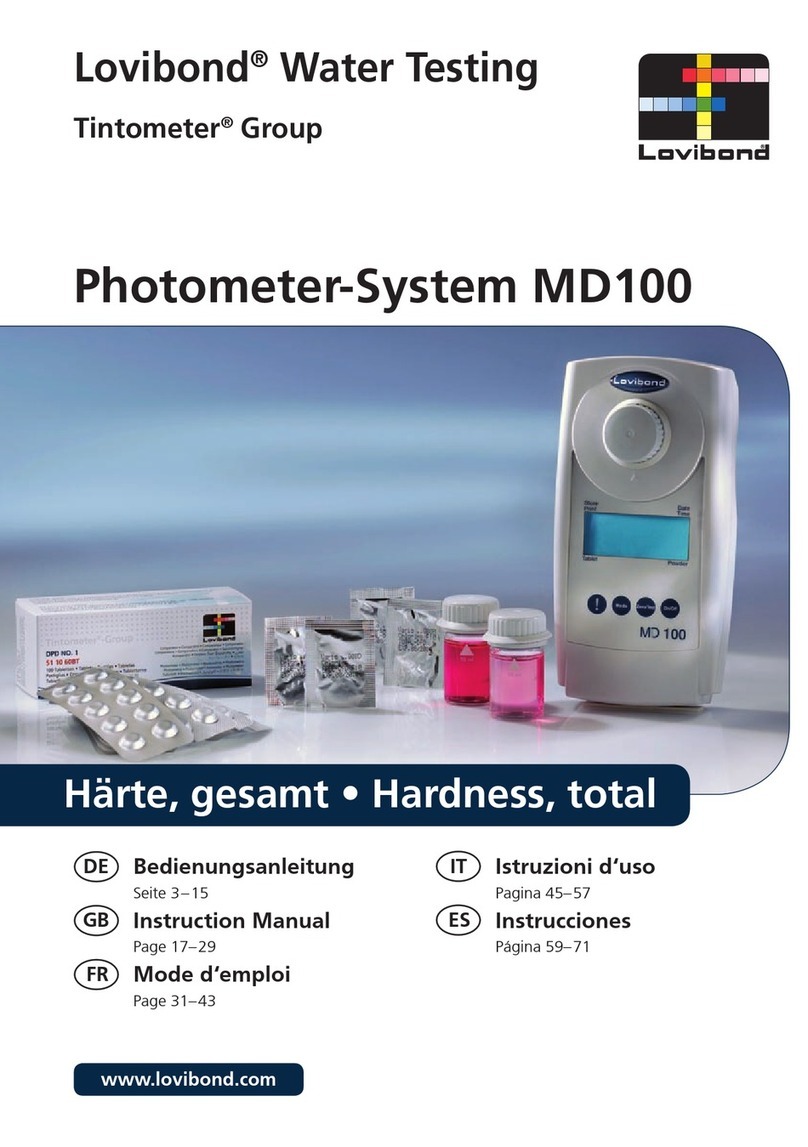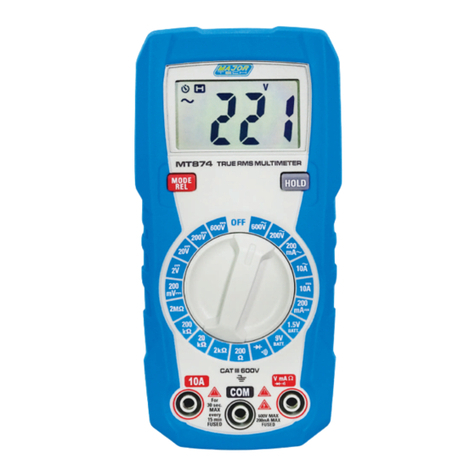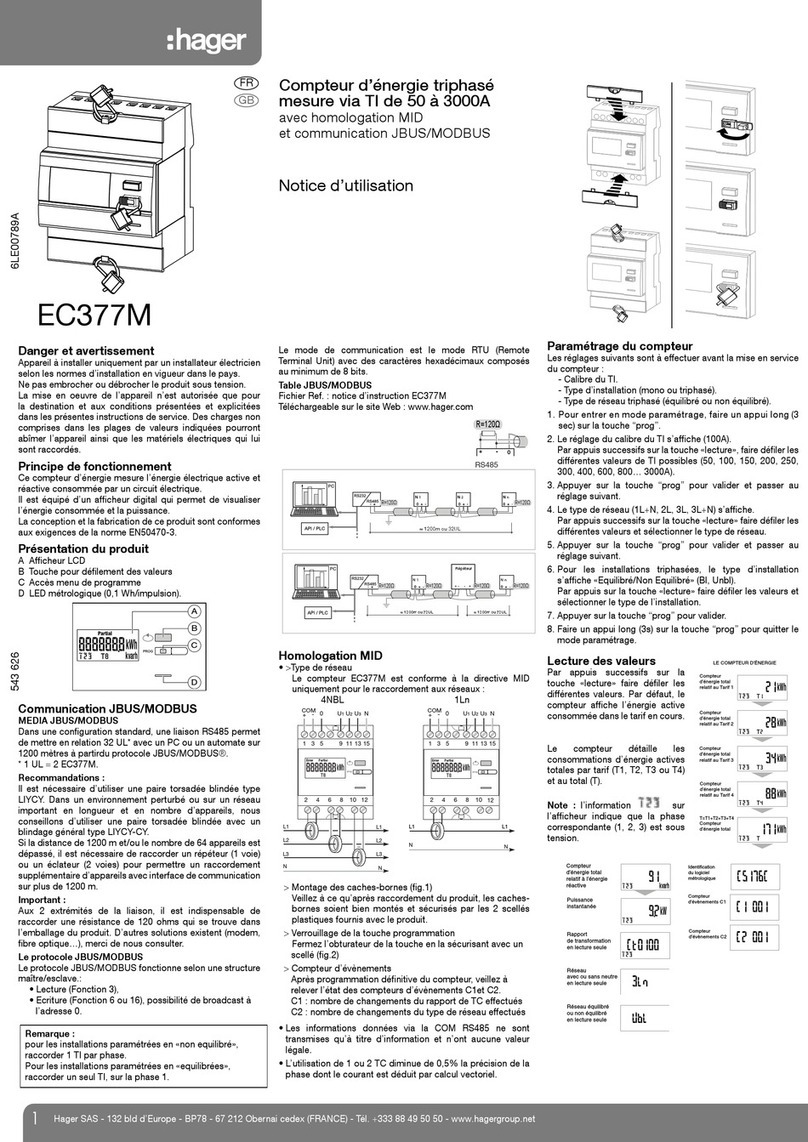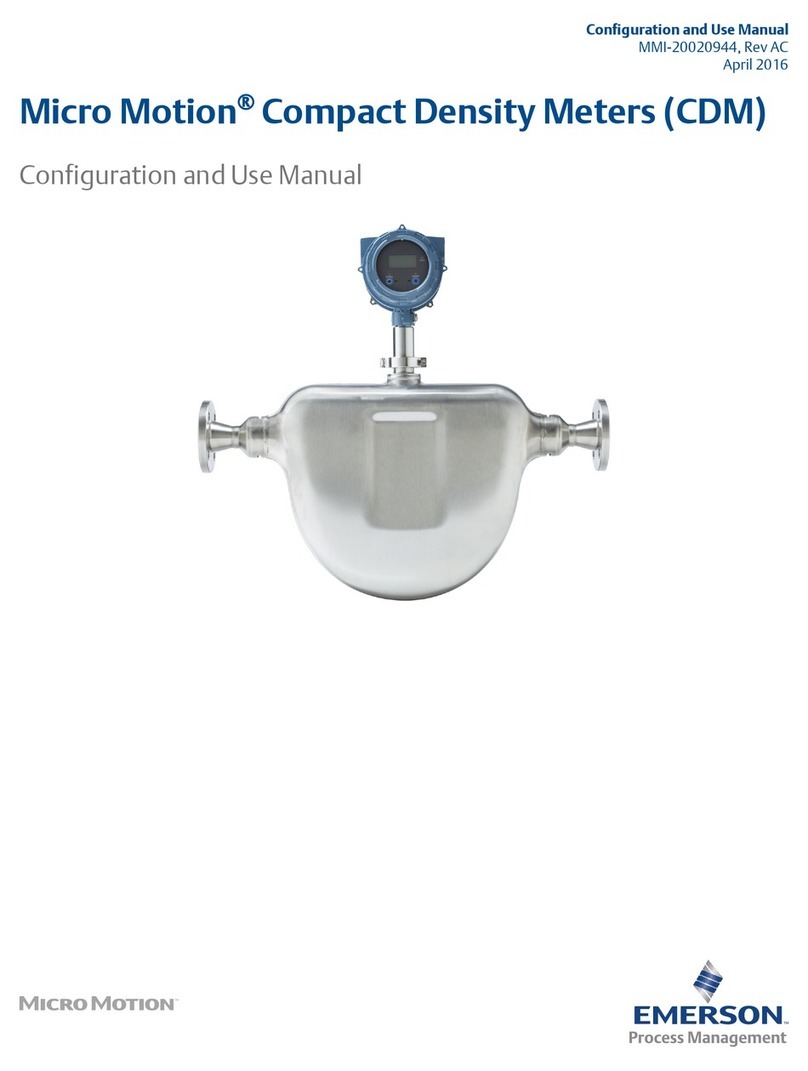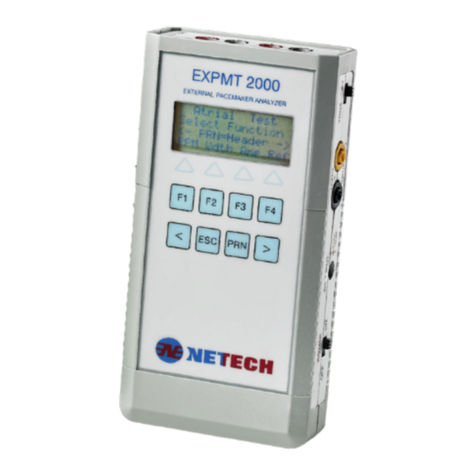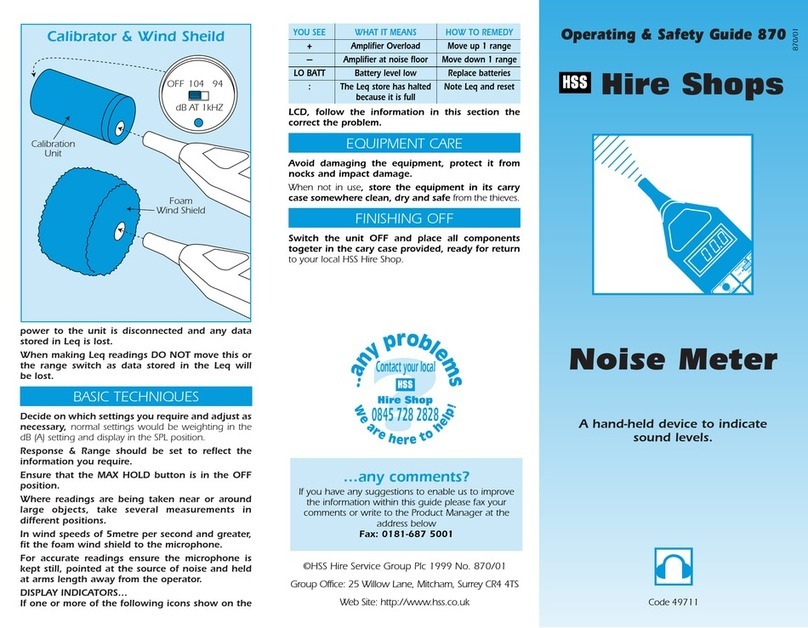FE FSH User manual

Instruction Manual
INF-TN1FSHa-E
HYBRID
ULTRASONIC FLOWMETER
<Duosonics>
TYPE: FSH (Flow transmitter)
FSW (Detector)
FLY (Signal cable)

INF-TN1FSH-E - i -
We thank you very much for purchasing Fuji’s ultrasonic flowmeter.
The instruction manual concerns the installation, operation, checkup and maintenance of the Flow
transmitter (FSH) and Detector (FSW) of ultrasonic flowmeter. Read it carefully before operation.
•Before using, be sure to read this instruction manual carefully to ensure correct installation, operation
and maintenance of the flowmeter. Note that incorrect handling may lead to trouble or personal injury.
•The specifications of this flowmeter are subject to change for improvement without prior notice.
•Do not attempt to modify the flowmeter without permission. Fuji is not responsible for any trouble
caused by modification without permission. If it becomes necessary to modify the flowmeter, contact
our office in advance.
•This instruction manual should always be kept on hand by the operator.
•After reading, be sure to keep this manual in a place where it can easily be seen by the operator.
•Make sure that this manual is presented to the end user.
•If the instruction manual has been lost, request another one (with charge) to our local business office.
Manufacturer: Fuji Electric Instrumentation Co., Ltd.
Type: Shown on nameplate of Flowmeter
Date of manufacture: Shown on nameplate of Flowmeter
Product nationality: Japan
Fuji Electric Systems Co., Ltd. 2005
NOTICE Issued in July 2005
Rev. 1st edition May, 2008
•It is strictly prohibited to reproduce any part or the whole of this
instruction manual.
•The contents of this manual may be changed without prior
notice.
PREFACE

- ii - INF-TN1FSH-E
Before using, read the following safety precaution to ensure correct handling of the flowmeter.
•The following items are important for safe operation and must be fully observed. These items are
classified into "DANGER" and "CAUTION".
Warning & Symbol Meaning
DANGER
Incorrect handling may lead to a risk of death or heavy injury.
CAUTION
Incorrect handling may lead to a risk of medium or light injury, or to a risk of
physical damage.
•The items noted under "
CAUTION
" may also result in serious trouble depending on circumstances.
( All the items are important and must be fully observed.
Caution on Installation and Piping
!( This product has not an explosion-proof structure. Do not use it in a place with
explosive gases, otherwise, it can result in serious accidents such as explosion, fire,
etc.
!( The unit should be installed in a place conforming with the installation
requirements noted in this instruction manual. Installation in an improper
location may lead to a risk of electric shocks, fire, malfunction, etc.
( The unit should be installed as noted in the manual. Improper installation will
cause falling, trouble or malfunction of the unit.
( During installation, make sure that the inside of the unit is free from cable chips
and other foreign objects to prevent fire, trouble, malfunction, etc.
( The items under "Caution on Installation" noted in the manual must be fully
observed. Careless installation may result in trouble or malfunction of the unit.
SAFETY PRECAUTION

INF-TN1FSH-E - iii -
Caution on Wiring
CAUTION
•When performing wiring termination to prevent output trouble caused by
moisture, dew condensation or water leak, follow “Section 3.3. Flow
transmitter wiring” described in this manual
•Before performing the wiring work, be sure to turn OFF the main power to
prevent electric shocks.
•Do not perform wiring work outdoors in rainy days to prevent insulation
deterioration and dew condensation. Otherwise, it can result in trouble,
malfunction, etc.
•Be sure to connect a power source of correct rating. Connection of a
power source of incorrect rating may lead to a risk of fire.
•The unit must be earthed as specified to prevent electric shocks or
malfunction.
•The analog output signal cable should be wired as far away as possible
from high-voltage lines to prevent entry of noise signals as it will cause
malfunction of the unit.
•To prevent malfunction of the unit, the analog output signal cable and
power cable should be wired using separate conduits.
Caution on Maintenance/Inspection
CAUTION
•The unit should be inspected everyday to always obtain good results of
measurements.
•When measuring the insulation resistance between the power/output
terminal and the case, follow “Section 5.2.4. Measuring insulation
resistance” described in this manual.
•If the fuse is blown, detect and eliminate the cause, and then replace the
fuse with a spare. If there are no spares, replace the fuse with the one
specified in this manual (that must be prepared by customer). Use of a
fuse other than specified or its short-circuit may cause an electric shock or
fire. The fuse should be replaced according to “Section 5.3. Replacing
fuse” described in this manual.

- iv - INF-TN1FSH-E
(1) Sufficient space for daily inspection, wiring, etc.
(2) Aplace not exposed to direct sunshine or weathering.
(3) Isolation from vibration, dust and moisture
(4) Aplace not subjected to radiated heat from a heating furnace etc.
(5) Aplace not subjected to explosive gas and corrosive atmosphere
(6) Aplace not submerged
(7) Aplace remote from electrical devices (motor, transformer, etc.) which generate
electromagnetic induction noise, electrostatic noise, etc.
(8) Aplace not subjected to excessive fluid pulsation (pump discharge side)
(9) Aplace that provides enough place for the length of the straight pipe.
(10) A place where ambient temperature and humidity are • 10 to +50°C and 90% RH or less for
flow transmitter (FSH), and • 20 to +80°C and 100% RH or less for detector (FSW).
CAUTION ON INSTALLATION LOCATION
CAUTION

INF-TN1FSH-E - v -
Contents
PREFACE..........................................................................................................................................................................I
SAFETY PRECAUTION................................................................................................................................................II
CAUTION ON INSTALLATION LOCATION...........................................................................................................IV
1. PRODUCT OUTLINE..................................................................................................................................................1
1.1. Outline......................................................................................................................................................................1
1.1.1. Measurement principle......................................................................................................................................1
1.2. Checking delivered items.........................................................................................................................................3
1.3. Checking type and specifications.............................................................................................................................4
1.4. Names of each part and functions ............................................................................................................................7
2. SELECTING INSTALLATION LOCATION ............................................................................................................9
2.1. Flow transmitter .......................................................................................................................................................9
2.2. Detector..................................................................................................................................................................10
2.2.1. Length of straight section of pipe....................................................................................................................11
2.2.2. Mounting position ...........................................................................................................................................12
2.2.3. Mounting the sensor........................................................................................................................................13
3. INSTALLATION AND BEFORE START OF OPERATION.................................................................................14
3.1. Before operation.....................................................................................................................................................14
3.2. Installing the flow transmitter ................................................................................................................................15
3.3. Flow transmitter wiring..........................................................................................................................................16
3.3.1. Cautions in wiring ...........................................................................................................................................16
3.3.2. Applicable wires..............................................................................................................................................16
3.3.3. Treatment of wiring port .................................................................................................................................16
3.3.4. Removing and mounting the cover and the shield plate..................................................................................17
3.3.5. Wiring to each terminal...................................................................................................................................18
3.4. Setting piping parameters and calculating the sensor spacing ...............................................................................19
3.4.1. Selecting sensor type, mounting the sensor, setting the sensor constant .........................................................19
3.4.2. Entering piping specifications.........................................................................................................................21
3.5. Installing Detector..................................................................................................................................................23
3.5.1. Outline of detector installation procedure .......................................................................................................23
3.5.2. Treatment of mounting surface .......................................................................................................................23
3.5.3. Mounting the detector by Z method using the frame ......................................................................................23
3.5.4. Mounting the sensor unit by Z method using a frame (2 measurement lines).................................................30
3.5.5. Mounting the sensor unit to a large-diameter pipe ..........................................................................................31
3.6. Setting analog output range and total pulse............................................................................................................35
3.6.1. Analog output range setting.............................................................................................................................35
3.6.2. Total pulse output setting ................................................................................................................................37
3.7. Zero adjustment......................................................................................................................................................38
4. SETTING PARAMETERS ........................................................................................................................................39
4.1. Description of display/setting unit .........................................................................................................................39
4.1.1. Description of display .....................................................................................................................................39
4.1.2. Description of keys .........................................................................................................................................39
4.2. Setting item list ......................................................................................................................................................41
4.3. Parameter specification table .................................................................................................................................42
4.4. Setting parameters..................................................................................................................................................45
4.4.1. Measurement method and sensor ....................................................................................................................47
4.4.2. Pipe specifications...........................................................................................................................................49
4.4.3. Measurement mode (Measurement mode, AO definition) ..............................................................................51
4.4.4. Output setting..................................................................................................................................................52
4.4.4.1. Range (range unit, range type, full scale, hysteresis) setting....................................................................52
4.4.4.2. Output limit ..............................................................................................................................................55
4.4.4.3. How to set analog output at error (BURNOUT) ......................................................................................56
4.4.4.4. Rate limit..................................................................................................................................................57
4.4.5. Damping..........................................................................................................................................................58
4.4.6. Zero adjustment...............................................................................................................................................59
4.4.7. Display setting.................................................................................................................................................60
4.4.8. Cut off .............................................................................................................................................................61
4.4.9. Integration .......................................................................................................................................................62

- vi - INF-TN1FSH-E
4.4.9.1. Total unit.................................................................................................................................................. 62
4.4.9.2. Setting total pulse (Total rate, pulse width) ............................................................................................. 63
4.4.9.3. Total preset .............................................................................................................................................. 65
4.4.9.4. Total SW.................................................................................................................................................. 66
4.4.9.5. Determining how to dispose of total at error (BURNOUT) .................................................................... 67
4.4.10. Flow switch .................................................................................................................................................. 68
4.4.11. Status output ................................................................................................................................................. 69
4.4.12. Output calibration......................................................................................................................................... 71
4.4.13. Measurement unit ......................................................................................................................................... 72
4.4.14. System language selection............................................................................................................................ 73
4.4.15. Setting serial communication (RS232C/RS485) .......................................................................................... 74
4.4.16. Maintenance ................................................................................................................................................. 75
4.4.16.1. Analog output adjustment and check..................................................................................................... 75
4.4.16.2. Checking status output .......................................................................................................................... 76
4.4.16.3. Calibrating temperature sensor.............................................................................................................. 77
4.4.16.4. Checking temperature sensor................................................................................................................. 78
4.4.16.5. Test mode............................................................................................................................................... 79
4.4.17. LCD backlight .............................................................................................................................................. 80
4.4.18. Key lock ....................................................................................................................................................... 81
4.4.19. Checking system name................................................................................................................................. 82
4.4.20. Details of measurement ................................................................................................................................ 83
4.4.20.1. Transit time............................................................................................................................................ 83
4.4.20.2. Pulse Doppler ........................................................................................................................................ 86
4.4.20.3. Initializing setting parameters ............................................................................................................... 90
4.4.20.4. Confirmation of software version.......................................................................................................... 90
5. MAINTENANCEAND INSPECTION.................................................................................................................... 91
5.1. Daily inspection..................................................................................................................................................... 91
5.2. Periodic inspection ................................................................................................................................................ 91
5.2.1. Checking zero point........................................................................................................................................ 91
5.2.2. Calibrating current output circuit ................................................................................................................... 91
5.2.3. Calibrating temperature sensor circuit............................................................................................................ 91
5.2.4. Measuring insulation resistance...................................................................................................................... 92
5.3. Replacing fuse ....................................................................................................................................................... 93
5.4. Replacing relay...................................................................................................................................................... 94
5.5. Replacing LCD...................................................................................................................................................... 95
6. TROUBLESHOOTING............................................................................................................................................. 96
6.1. How to confirm normal operation ......................................................................................................................... 96
6.1.1. Checking on LCD........................................................................................................................................... 96
6.1.2. Checking measurement status information..................................................................................................... 97
6.1.2.1. Checking and setting of RAS information............................................................................................... 97
6.1.2.2. Status information ................................................................................................................................. 100
6.1.2.3. Measurement data information.............................................................................................................. 101
6.2. Faults and remedies ............................................................................................................................................. 103
6.2.1. Display error................................................................................................................................................. 103
6.2.2. Key failure.................................................................................................................................................... 103
6.2.3. Measurement value error.............................................................................................................................. 104
6.2.4. Analog output error ...................................................................................................................................... 106
6.3. Checking received waveform .............................................................................................................................. 107
6.3.1. Method by oscilloscope................................................................................................................................ 107
6.3.2. Checking signal waveform (TRANSIT TIME) ............................................................................................ 108
6.3.3. Checking demodulated waves (Pulse Doppler).............................................................................................110
6.3.4. Measures against hardware failure ................................................................................................................110
7. PC LOADER SOFTWARE......................................................................................................................................111
7.1. Copyright of this software....................................................................................................................................111
7.2. Outline..................................................................................................................................................................111
7.3. PC to be used........................................................................................................................................................111
7.3.1. Computer.......................................................................................................................................................111
7.3.2. Memory capacity...........................................................................................................................................111
7.3.3. Interface.........................................................................................................................................................111
7.3.4. OS..................................................................................................................................................................111
7.4. Installing of Software ...........................................................................................................................................112
7.5. Startup Method .....................................................................................................................................................115

INF-TN1FSH-E - vii -
7.5.1. Communications ...........................................................................................................................................116
7.5.2. Setting ...........................................................................................................................................................117
7.5.2.1. Save setting ............................................................................................................................................117
7.5.2.2. Read setting............................................................................................................................................117
7.5.3. Version ..........................................................................................................................................................118
7.6. Structure of Function............................................................................................................................................118
7.7. Establish Setting...................................................................................................................................................119
7.8. Range Setting .......................................................................................................................................................121
7.9. Total Setting .........................................................................................................................................................123
7.10. Status Output Setting..........................................................................................................................................125
7.11. Display Setting ...................................................................................................................................................126
7.12. System Setting....................................................................................................................................................127
7.13. Measurement......................................................................................................................................................128
7.14. Pulse Doppler Measurement ..............................................................................................................................129
7.14.1. Detailed setting (optional function).............................................................................................................129
7.14.2. Flow velocity profile (optional function) ....................................................................................................131
7.14.3. Operation Information.................................................................................................................................133
7.15. Transit Time Difference Measurement...............................................................................................................135
7.15.1. Detailed Setting (optional function) ............................................................................................................135
7.15.2. Received Signal (optional function)............................................................................................................137
7.15.3. Operation Information.................................................................................................................................138
7.16. Maintenance.......................................................................................................................................................140
7.17. End .....................................................................................................................................................................142
7.18. Uninstalling of Software ....................................................................................................................................142
8.APPENDIX................................................................................................................................................................143
8.1. External communication specifications................................................................................................................143
8.1.1. Communication specifications ......................................................................................................................143
8.1.2. Message configuration ..................................................................................................................................143
8.1.2.1. Receiving ...............................................................................................................................................143
8.1.2.2. Response ................................................................................................................................................143
8.1.2.3. Error response ........................................................................................................................................144
8.1.3. Error check....................................................................................................................................................144
8.1.4. Function code table .......................................................................................................................................145
8.1.5. Error code table.............................................................................................................................................146
8.1.6. Cable connection specifications (RS-232C)..................................................................................................146
8.2. Specifications.......................................................................................................................................................147
8.3. Outline diagram....................................................................................................................................................149
8.4. Items to be specified at placement of an order .....................................................................................................154
8.5. Composition of key operation..............................................................................................................................157
8.6. Piping data ...........................................................................................................................................................164
8.7. Making gauge paper.............................................................................................................................................172

INF-TN1FSH-E - 1 -
1. PRODUCT OUTLINE
1.1. Outline
This high precision flowmeter is the world’s first clamp-on type ultrasonic flowmeter that adopts the pulse Doppler
method and the transit time method as its measurement principles. The ultrasonic flowmeter for industrial use
employs the pulse Doppler method, which directly measures flow distribution, thus easing straight pipe conditions and
allowing measurement of flows that have not grown into eddy or laminar flow. Combined use of the transit time
method allows the hybrid ultrasonic flowmeter to be used for measuring a significantly wide range of liquids. The
pulse Doppler method, which uses echoes coming from reflectors in a liquid to be measured, is ideal for the
measurement of liquids that contain air bubbles and particles. On the other hand, the transit time method, which
allows ultrasonic waves to pass through for measurement, is ideal for the measurement of clean liquids.
The new hybrid technique employing both the pulse Doppler and the transit time methods allows the flowmeter to be
used for wider range of applications. In addition, our self-developed switching algorithm ensures automatic switching
between the two methods depending on the conditions of a liquid to be measured (such as mixing status of air bubbles
or particles and flow rate), thus facilitating measurement.
1.1.1. Measurement principle
<Pulse Doppler method>
•The pulse Doppler method measures flow distribution and flow rate based on the fact that Doppler frequency of the
echo coming from reflectors such as air bubbles and particles in liquids changes with fluctuation of flow rate.
Sensor 2
Sensor 1
Flow
Reflection
Air bubble
Flow rate
Pipe wall Center Pipe wall
Flow velocity
distribution 2
Flow velocity
distribution 1
<Transit time method>
•Under the transit time method, ultrasonic pulses are propagated slanted from both upstream and downstream sides,
and time difference of flows are detected to measure the flow rate.
Sensor 1 !2
Flow
Send Receive
Sensor 2 !1
Time difference ∆T
Sensor 2
Sensor 1

- 2 - INF-TN1FSH-E
Configuration
(1) 1 measurement line method (Z method)
Flow
transmitter
Power supply
Temperature sensor cable
4 to 20 mA DC
Contact (3 points max.)
Detector
Cable
(2) 2 measurement line method (Z method)
Detector
Cable
Flow
transmitter
4 to 20 mA DC
Contact (3 points max.)
Power
supply
Temperature sensor cable

INF-TN1FSH-E - 3 -
1.2. Checking delivered items
Flow transmitter (FSH)
Flow transmitter main unit ··································1 set
Waterproof gland (Built into the main unit) ·········1 set
Wall mount fittings (Built into the main unit) ······1 set
Detector (FSWS12, 21, 40)
Detector main unit (FSWS12, 21) ·······················1 set
Detector main unit (FSWS40) ·····························1 set
Absorber unit ······················································1 set
Stainless steel belt ···············································1 set
Fittings ································································1 set
Silicon rubber······················································ 1 pc
Detector (FSWS50)
Detector main unit (FSWS50)····························· 1 set
Absorber unit······················································ 1 set
Wire rope···························································· 1 set
Spring for mounting············································ 1 set
Signal cable (FLY6)
Cable for ultrasonic signals···················1 pair (2 pcs.)
Signal cable (FLY7)
Cable for temperature sensor ··································· 1
CD-ROM (Instruction manual and Loader software)
······································ 1
Flow transmitter (FSH) Detector (FSWS12, 21, 40) Detector (FSWS50)
Detector (FSWS12, 21)
Detector (FSWS40)
Stainless steel belt
Silicon rubber
Wire rope
Spring for mounting
Signal cable (FLY6)
Cable for ultrasonic signals Signal cable (FLY7)
Cable for temperature sensor
Frame
Sensor unit
Absorber unit
Absorber unit Sensor unit
Frame
Sensor unit
Absorber unit

- 4 - INF-TN1FSH-E
1.3. Checking type and specifications
The specification plates attached to the flow transmitter and the detector list the type and specifications of the product.
Check that they represent the type you ordered, referring to the following code symbols.
< Flow transmitter (FSH)>
F1S Description
SH
12345678 9101112
Type (4th digit)
Standard (Japanese)
Standard (English)
Velocity profile output (5th digit)
None
Available
Use (6th digit)
Single path or Changeover two-path (Note)
Note: 2 sets of detectors and coaxial cables (FLY6)
needed for two-path system
Power supply (7th digit)
100 to 240VAC, 50/60Hz
20 to 30VDC
Modification No. (8th digit)
Case structure (9th digit)
Watertight type (IP67)
Conduit connection (10th digits)
[G1/2 and G3/8 (female screw)] with waterproof gland
[G1/2 (female screw)] with union gland (for plica)
Note: The wiring port for coaxial cable (for ultrasonic
sensor) and 3-wire cable (for temperature
sensor) is provided with waterproof gland [G3/8 (female screw)].
For use with explosion-proof detector (11th digit)
None
Parameter setting, Tag plate (12th digit)
None
With setting
With setting + Tag plate
Tag plate
S
E
S
1
1
4
Y
Y
A
Y
A
Y
Y
A
B
C
Fuji Electric Systems Co.,Ltd.
Mfd.
DC20
-
30V
Type
Ser.No.
Ultrasonic Flow Meter
Output DC4-20mA
Power Supply AC100
-
240V 50 60Hz
Made in Japan

INF-TN1FSH-E - 5 -
<Detector (FSW)>
F1
Description
S
W
12345678 910
11
1
2
4
5
S
2
1
0
0
0
Y
A
Y
A
Y
1
Type (4th digit)
Standard
Kind of detector (5th and 6th digit)
Small diameter detector (φ40 to 200 mm)
Small size detector (φ100 to 400 mm)
Middle size detector (φ200 to 500 mm)
Large size detector (φ500 to 1000 mm)
Use (7th digit)
Watertight type (IP67)
Modification No. (8th digit)
Mark 1
Signal cable (9th digit)
None
Acoustic coupler (10th digit)
None
Silicone compound
Option (11th digit)
None
Tag Plate
Fuji Electric Systems Co.,Ltd.
Made in Japan
Ser.No.
Mfd.
Type.
<Sensor unit>
The numeric value marked on the DF field of the nameplate of the sensor unit represents the sensor constant, which
is determined by actual current calibration performed as part of the delivery test at the factory.
Ultrasonic Flow Meter
SN :
DF
-
P :
DF
-
M :
Sensor constant for plastic pipe
Sensor constant for metal pipe
Sensor unit

- 6 - INF-TN1FSH-E
<Signal cable (FLY)>
F1Description
LY
12345678
Kind of cable (4th digit)
Coaxial cable (for ultrasonic sensors) 1 pair (2 pcs.)
Three-core cable (for temperature sonsor)
Cable length (5th to 7th digit)
5m
10m
15m
20m
25m
30m
35m
40m
45m
50m
55m
60m
65m
70m
75m
80m
85m
90m
95m
100m
110m
120m
130m
140m
150m
Modification No. (8th digit)
Mark1
6
7
5
0
5
0
5
0
5
0
5
0
5
0
5
0
5
0
5
0
5
0
0
0
0
0
0
0
1
1
2
2
3
3
4
4
5
5
6
6
7
7
8
8
9
9
0
1
2
3
4
5
0
0
0
0
0
0
0
0
0
0
0
0
0
0
0
0
0
0
0
1
1
1
1
1
1
1

INF-TN1FSH-E - 7 -
1.4. Names of each part and functions
No. Name Description
(1) Wiring connection port for power cable Wiring port for power cable
(2) Wiring connection port for ultrasonic signal
cable
Wiring port for ultrasonic signal cable
(3) Wiring connection port for temperature
sensor cable
Wiring port for temperature sensor cable
(4) Wiring connection port for DO output
cable
Wiring port for for DO output cable
(5) Display and setting unit Displays flow rate, etc. Used for various setting operations.
(6) LCD Displays flow rate and various settings.
(7) Setting key Used for making settings.
(8) Power terminal Connect power cable to this terminal.
(9) I/O terminal Connect power output cable, communication cable, and
temperature sensor cable to this terminal.
(10) Input terminal Connect ultrasonic signal cable to this terminal.
(11) Output terminal Connect Do output cable to this teminal.
(12) LCD contrast adjusting knob Used for adjusting the contrast of the LCD.
(13) Sensor unit Used for transmitting/receiving ultrasonic waves.
(14) Sensor frame Used for fastening the sensor unit to the piping.
(5) (6)
(7)
(8)
(9)
(10)
(12)
(11)
(3) (2) (4) (1)
(22)
(21)
(23)
(13)(15)(14)
(16)
(17) (18)
(19) (20)

- 8 - INF-TN1FSH-E
No. Name Description
(15) Retainer plate Used for fastening the sensor by pressing it against the piping.
(16) BNC connector for ultrasonic signal cable Transmits ultrasonic send/receive signals.
(17) Water-tight connector for temperature
sensor cable
Transmits temperature sensor signals.
(18) Stainless steel belt Used for fastening the sensor frame to the piping.
(19) Ultrasonic wave transmission surface Transmits ultrasonic waves to the fluid to be measured or
receives them through the piping.
(20) Temperature sensor piping contact surface Makes the temperature sensor contact the piping.
(21) Cover Protects the unit from contact with high-voltage section.
(22) Shield plate Shields the input terminal (10).
(23) Earth cable Connects the arrestor of the output terminal. (See “5.2.4.
Measuring insulation resistance.”)

INF-TN1FSH-E - 9 -
2. SELECTING INSTALLATION LOCATION
Select an installation location that satisfies the following conditions, with ease of maintenance and inspection, service
life of the instrument, and assurance of reliability taken into consideration.
CAUTION
(1) A place where ambient temperature and humidity are as follows:
Flow transmitter (FSH): −10 to +50°C, 90%RH or lower
Detector (FSW): −20 to +80°C, 100%RH or lower
(2) A place not subject to direct sunlight or weather
(3) A place provided with space for daily inspection and wiring work
(4) A place not subject to radiant heat from a heating furnace, etc.
(5) A place not in an atmosphere of corrosive or explosive gas
(6) A place not subject to flooding
(7) A place not subject to vibration, dust, or moisture
2.1. Flow transmitter
Allow space of 100 mm or more between the flow transmitter and the surrounding walls. Allow sufficient space for
opening of the front cover for maintenance.
Allow sufficient space for wiring at the bottom of the case.
O
P
E
N
244mm 100mm
or more
245mm
348mm

- 10 - INF-TN1FSH-E
2.2. Detector
The mounting position of the detector, in other words, the state of the piping where the flow rate is to be measured,
affects the accuracy of measurement to a great extent. Select a place that satisfies the conditions described in 2.2.1.
Length of straight section of pipe. Assure sufficient working space for installation and maintenance, referring to the
figures shown below.
D + 1200 or more 600
or more 600
or more
200
or more
Note
200
or more
200 or more
D
D: Pipe diameter
Space required for mounting of detector

INF-TN1FSH-E - 11 -
2.2.1. Length of straight section of pipe
To assure the accuracy of flow rate measurement, allow sufficient length of the straight section of the pipe on the
upper/lower stream side, referring to “straight pipe conditions” shown below.
L≧10D
Detector
L≧50D
L≧30D
In case that flow control valve exists on
upstream side. In case that flow control valve exists on
downstream side.
L≧10D
L≧10D
L≧10D
L≧5D
L≧30D
≧1.5D
L≧50D
0.5D
or
more
10D or more
10D
or
more
D
L≧5D
L≧5D
Check valve
Stop valve
10D or more
90 bend
Tee
Diffuser
Reducer
Various Valve
Pump
(Note) The source : JEMIS-032
Classification Upstream side Downstream side
( D : Inside diameter of pipe)
P

- 12 - INF-TN1FSH-E
2.2.2. Mounting position
The instrument can be mounted horizontally or in any other position. However, pay attention to the following.
(1) Allow fluid to fill the pipe and keep it flowing at all times.
Pump
Air tends to pile up.
Good
Good
The pipe
may not be
filled with fluid.
The pipe may not be filled with fluid.
(2) Mount the flowmeter within ±45°from the center plane in the case of horizontal pipe run.
Mount it at an arbitrary position on the outer periphery in the case of vertical pipe run.
Horizon
Pipe 45
45
(3) Avoid mounting the flowmeter in a position where the pipe is deformed, or on a flange or welded part.
Includes welded part. Does not include welded part.
Welded part Welded part
Overlaid on welded part. Not overlaid on welded part.
×
○
○
This manual suits for next models
2
Table of contents
Other FE Measuring Instrument manuals
